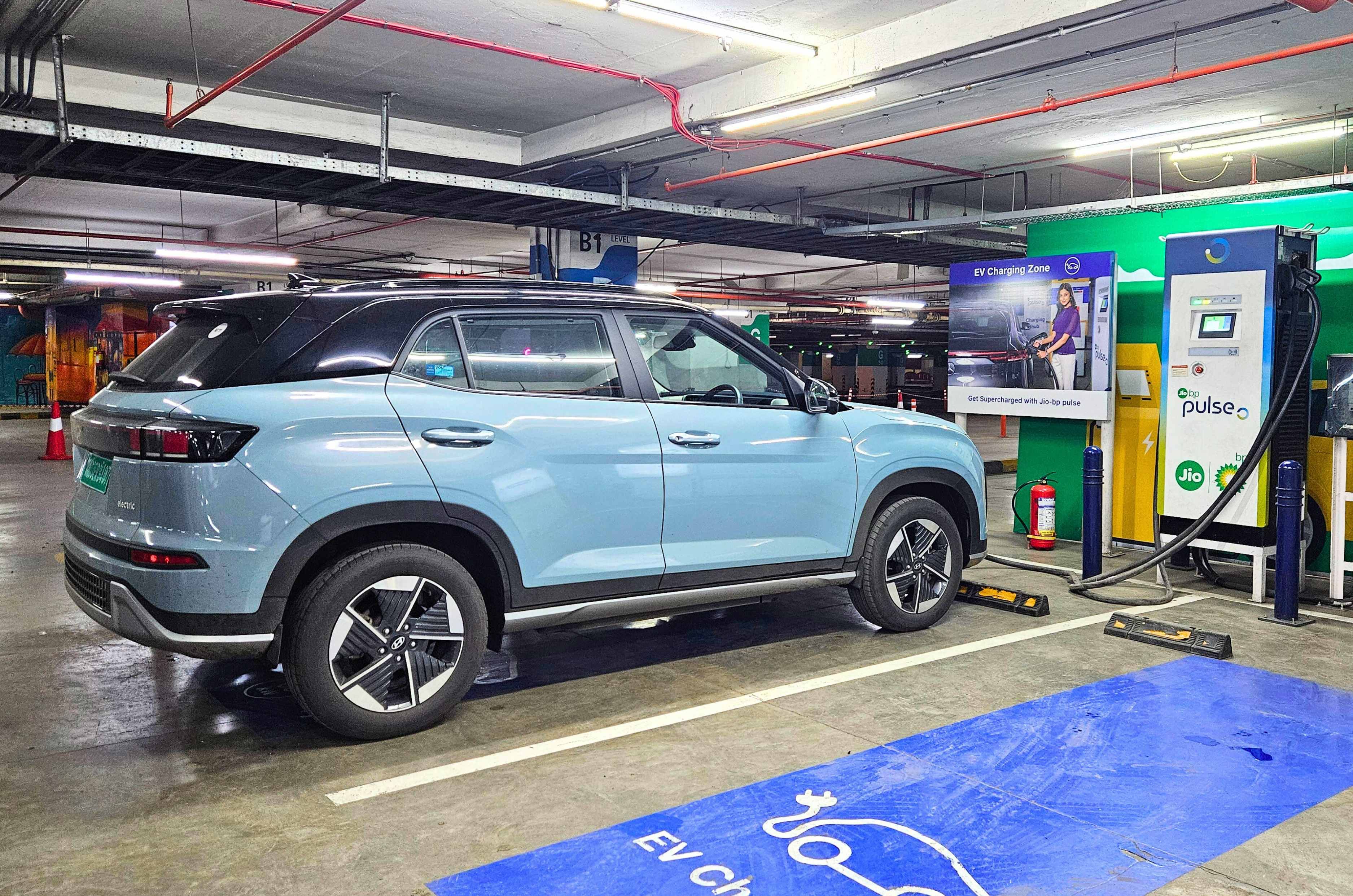
The electric version of the mighty popular Creta midsize SUV is available with two battery pack options, 42kWh and 51.4kWh, priced between Rs 17.99 lakh and Rs 24.38 lakh. This makes the Hyundai Creta Electric Rs 3.62 lakh to Rs 5.16 lakh pricier than the 1.5-litre petrol-IVT version.
- Creta Electric’s claimed range is up to 473km
- Gets Eco drive mode; Eco air-con setting
- Weighs 265kg more than the petrol-IVT Creta
Hyundai Creta Electric real world range
As per the company’s claims, the 42kWh and 51.4kWh versions can deliver 390km and 473km, respectively. We put the bigger battery version through our standardised range test to verify the same. The Hyundai Creta Electric long-range variant is powered by a 171hp electric motor driving the front wheels and draws energy from a 51.4kWh lithium-ion battery with Nickel Manganese Cobalt (NMC) cell chemistry.
At 1,577kg, the top-spec Creta Electric tested here is 265kg heavier than the equivalent 1.5-litre petrol-IVT version. Like its ICE counterpart, it offers Eco, Normal and Sport drive modes, while also adding an Economy setting for the climate control. Regenerative braking is available in five levels, ranging from Level 0 (off) to a single-pedal i-Pedal mode.

For our range test, the EV was driven in Eco mode throughout. In the city, regenerative braking was set to Level 3 (high), and with an average speed of 18.6kph, the EV delivered an efficiency of 9.45km/kWh. On the highway, regen was set to Level 1 (low), and with an average speed of 55kph, the efficiency it delivered was 7.36km/kWh. The overall (average) range figure extrapolated to 432km on a single charge.
Autocar India’s range testing
Before our real-world range test, the battery of our test car was fully charged, and we maintained tyre pressures in accordance with the manufacturer’s recommendation. The car was driven in Navi Mumbai city and the adjoining state highway in a fixed loop and on a weekday, and we maintained the set average speeds. At the end of each cycle, we calculated the range based on the percentage charge consumed.
Throughout our test, the climate control was set to 22deg C in full-auto setting, and other electricals like the audio system, indicators and ventilated front seats were used when required, just like how a regular user would. We take pride in our testing data, which isn’t merely consistent but also gives users an accurate indication of what they can expect in the real world.
Also see:

